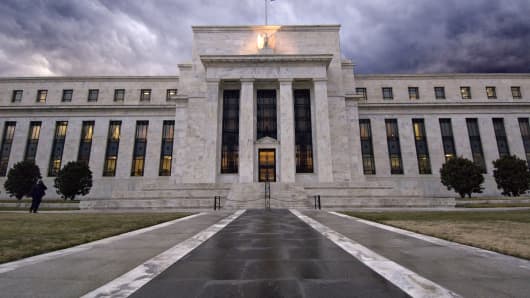Compounding the disappointment were substantial revisions in June and July. July jobs were slashed to 104,000 from 162,000, and 16,000 jobs were also shaved from June's number. Zandi said much of July's revision was due to a reduction in manufacturing and transportation jobs related to temporary shutdowns of auto production. "That could also mean that August could be revised down," he said, though he noted that August numbers are frequently revised higher.
While all Fed watchers did not expect the Fed to cut back its quantitative easing in September, the market was leaning toward September, as opposed to later in the fall. Fed Chairman Ben Bernanke had made it clear the Fed would begin to pare back the program this fall if the economic data supported it.
Squishy data makes the call on September more difficult.
(Read more: European stockslooking good; US? Not so much)
"The debate will now probably continue until we get to the Fed meeting," said Kathy Jones, Charles Schwab fixed-income strategist. "The consensus was pretty clear we'd have tapering. This renews the debate to some extent but I still think they taper but 'taper light.'"
She expects to see the 10-year yield revisit 2.80 percent ahead of the Fed's Sept. 17-18 meeting.The yield zipped above 3 percent for the first time in more than two years Thursday before falling back Friday. It was at 2.90 percent in late morning trading. (Where are yields now? Click here)
Stocks, meanwhile, sold off sharply on headlines that Russian President Vladimir Putin said Russia would continue to supply Syria with weapons and aid if it were attacked by the U.S. The Dow saw a steep triple digit loss, but recovered by late morning after President Obama spoke and traders revisited Putin's comment.
Art Cashin, director of floor operations at UBS, said Putin was seen as not just talking weapons but humanitarian aid. "I think it's the fact the tone is being reinterpreted," he said.
Zandi said Syria is a wild card and it could be a factor for the Fed. "I think they desperately want to get it going," said Zandi of tapering. "The only thing that might derail it is if the bombing of Syria happens at the same time as their meeting."
Jones said the soft jobs number means the market will continue to trade with heightened volatility, as traders ponder the Fed, watch Syria and discuss the lack of a new Fed chairman. The Treasury market has been selling in some part due to the fact that former Treasury Secretary Larry Summers is seen as President Obama's favored candidate to head the Fed, when Bernanke steps down at year end. He is seen as more hawkish than Fed Vice Chair Janet Yellen, previously viewed as front runner.
But the market also overlooks that former Fed Vice Chairman Donald Kohn is also in the running, according to comments made by President Obama. Kohn, in a note from Potomac Research, weighed in on the jobs report and the Fed Friday morning.
Kohn said he still expects to see the Fed taper, but the odds have fallen to 60/40 from 80/20 a few days ago. Kohn said if the Fed hadn't pre-committed to tapering, it might have waited, but now it is likely it will "go with a very gentle first step - complete with caveats about how it could be reversed and how it doesn't imply anything about when rates will be raised."
Kansas City Fed President Esther George later weighed in. George is a hawk and dissenter who has wanted to end quantitative easing. She said in a speech Friday afternoon that it would be appropriate to taper both Treasury and mortgage purchases in September in the amount of $15 billion, a 'taper light' relative to some economists' estimates of $25 billion.
—By CNBC's Patti Domm. Follow here on Twitter @pattidomm.





